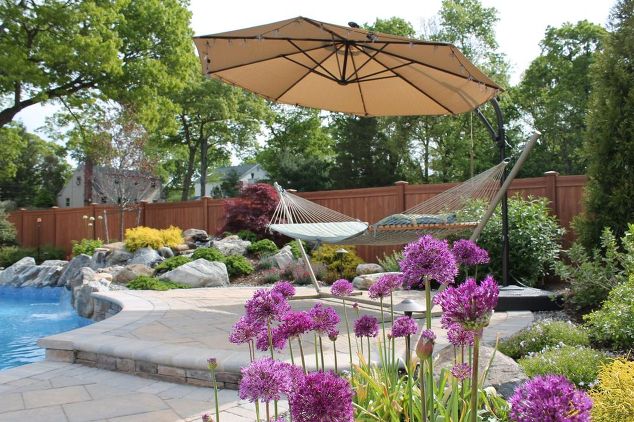What is Involved in Creating a Backyard Oasis Landscape?
You know it when you see it, a backyard so tranquil and lovely — and beautifully designed for entertaining — that it didn’t come about without expert planning.
Of course, you’ll no doubt turn to a professional to install any pool or spa, and perhaps the deck or patio areas. But for you hardy do-it-yourselfers out there, if you want to do the landscaping yourself, for picture-perfect, and useful, outdoor living spaces, here’s a few tips.
It is key to learn which plantings work well together, their bloom periods, those that thrive in full or partial shade, as well as plantings that will need the least care.
In addition, a beautiful backyard retreat can require selectively removing what is already there: trees and shrubs, as well as undesirable rocks and boulders that may be in the way. It’s also important to learn what is needed to nourish your particular property’s soil.
When it comes to soil nutrients, there are several places you can go for information, such as the Cornell Cooperative Extension in your area, where experts can guide you and sometimes even help analyze the soil.
As for the landscape design plan, take into consideration your home’s architecture as well as your style preferences.
“It’s also key to pay close attention to your property grades,” adds Dave Stockwell, owner of Deck and Patio. “We plan so that the landscape will flourish and last for years. Our designs include a layering technique that offers privacy on the periphery and vibrancy where it will be best enjoyed.”
Dave adds that another trademark of great design is the careful combining of ‘softscape’ with ‘hardscape.’ “Careful placement of moss rock will also add to the dimension and texture and a natural appearance.”
Because this property was open on three sides with three homes in full view, we added Skip Laurels, Leyland Cypress, and Cedars on the periphery to create a natural privacy screen. Texture and color were brought in to the buffering divider by incorporating flowering deciduous shrubs.
For the same project above, Deck and Patio’s Marc Wiener incorporated creeping evergreen ground covers that cascade and wind over and between the rocks we used. His selection of plants provide color from April through October; the whole design flows beautifully into the back property.
Sandra Vutaggio, Horticulture Consultant at the Cornell Cooperative Extension in Riverhead, NY says that there are many plant choices that will provide either bark interest, colorful berries/seedheads late-season. The beautiful purple berries of the Callicarpa plant pictured here, for example, begin in fall and last through winter. Photo: Missouri Botanical Garden
These beautiful purple flowers (seen in the foreground) are planted in the fall and are one of the many plantings that offer robust color in the summer outdoor season and thrive nicely on Long Island and in the northeast. Deck and Patio’s Marc Wiener chose them for this design plan for their height as well as their lovely color contrast.






